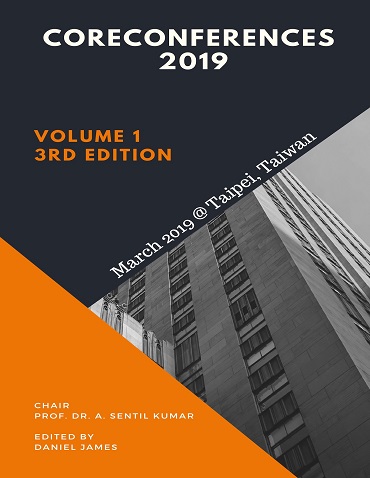- Publication Meta:Value
- Short Title:CC Batch A 2019
- Publisher:ASDF, India
- ISBN 13:978-93-88122-06-1
- ISBN 10:93-88122-06-2
- Language:English
- Type:Hard Bound - Printed Book
- Copyrights:CC Batch A Organizers/DCRC, London, UK
- Editor-in-Chief:Dr A Senthilkumar
- Conference Dates:20 - 21, March 2019
- Venue Country:Taipei, Taiwan
- Submitted Papers:227
- Acceptance Rate:8.51%
- Website:www.coreconferences.com
Welcome to ASDF Electronic Digital Library!
CoreConferences 2019
CoreConferences 2019
International Conference on Language Teaching and Religious Studies 2019
Paper 019
Politeness and Intimacy in Application Letters of Three Cultural Groups in Mindanao
Helen G Juaini1
Abstract
150 application letters from the three cultural groups in Mindano, namely Sinama, Subanen, and Tausug have been analysed in a mixed–method design. The focus of the study is on the two features of politeness and intimacy. In the quantitative analysis, the model proposed by Brown & Levinson (1987) and that of Columns (2005) which have drawn upon the features of indirectness in requesting and the length of letters as the indicators of politeness are used. In the qualitative and descriptive analysis formality in salutation and opening clause as well as the use of abbreviated forms are taken into account. The result shows that Tausug use the politest style in their application letters, followed by Sinama and Subanen respectively. On the other hand, Sinama, Subanen, and Tausug use the least intimate style in their business letters. The findings are hoped to help better inter–cultural understanding, especially with respect to written rhetorical characteristics.
Keywords
Author's Profile
Author profile can be generated and linked through our partners World Book of Researchers. To include your profile online Click Here. After it is approved, please email to edlib @ asdf.res.in to create a link with all the papers.
e-AID
CoreConferences.2019.019
Cite this Article as Follows
Helen G Juaini. Politeness and Intimacy in Application Letters of Three Cultural Groups in Mindanao. International Conference on Language Teaching and Religious Studies (2019): 10. Print.
© 2010 - by EDLIB .
All Rights Reserved.

